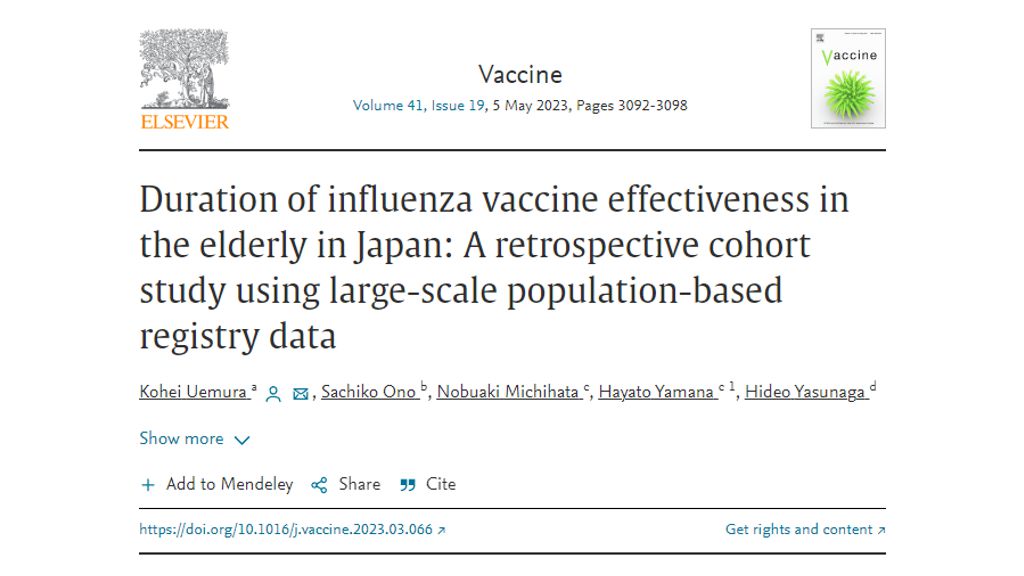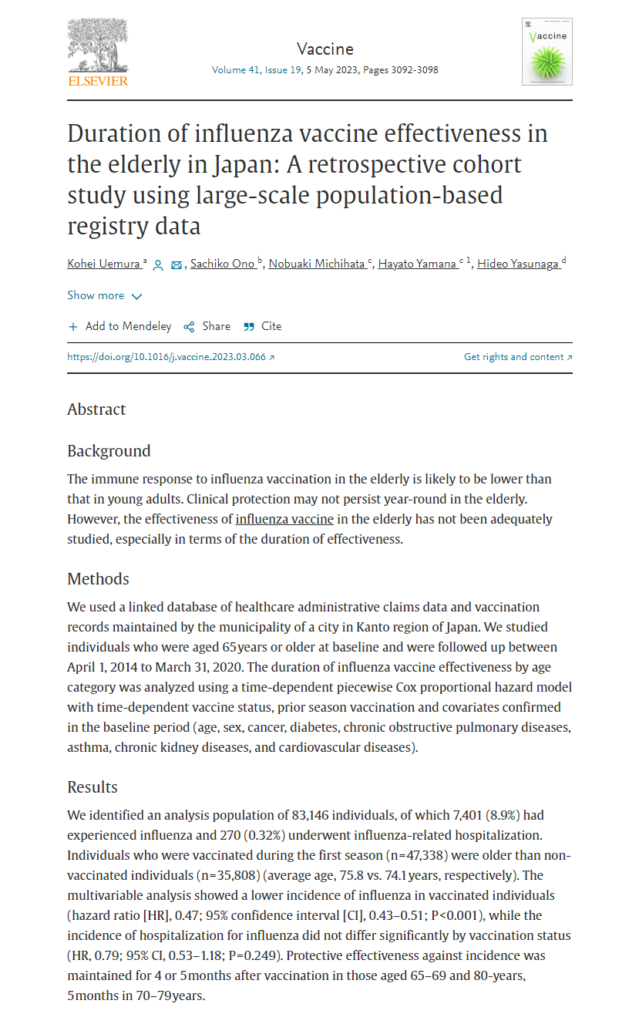Large Japanese study shows no benefit on hard outcomes
Influenza vaccination has become a mainstay in American medicine largely as a measure to protect the elderly. However, in recent decades, the FluShot has been pushed on health care workers, and the general adult public, and starting in 2017 the CDC [Centers for Disease Control and Prevention] ACIP [Advisory Committee on Immunization Practices] panel stated: “Routine annual influenza vaccination is recommended for all persons age 6 months and older who do not have a contraindication.”
I wondered if the FluShot even did was it was supposed to do originally in the elderly—protect against hospitalization and death. I was disappointed by real-world data.
Uemura and coworkers from the Department of Biostatistics & Bioinformatics, Interfaculty Initiative in Information Studies, University of Tokyo, Japan reported on 83,146 individuals who were aged 65 years or older at baseline and were followed up between April 1, 2014 to March 31, 2020.
The multivariable analysis showed a lower incidence of influenza in vaccinated individuals (hazard ratio [HR], 0.47; 95 percent confidence interval [CI], 0.43-0.51; P < 0.001), however, the incidence of hospitalization for influenza did not differ significantly by vaccination status (HR, 0.79; 95 percent CI, 0.53-1.18; P = 0.249). Protective effectiveness against incidence waned quickly after four or five months.
These data suggest the massive effort on vaccination in the general population is a waste of time and effort. If the frail and elderly get no overall direct reduction in hospitalization and death, influenza vaccination should be individualized based on pulmonary and systemic risks.
Reference:








